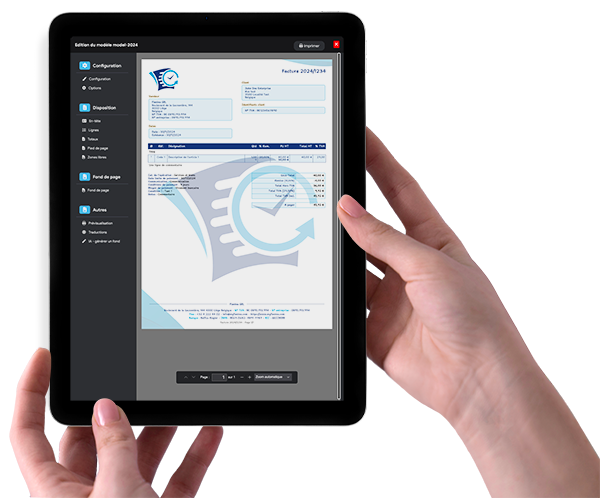Electronic invoicing is now mandatory for B2G (between businesses and administration) and will soon be for B2B (between businesses).
This article will explain in a simple but comprehensive way what electronic invoicing is and what are the advantages of using electronic invoicing right now.
What is the difference between a paper, digital and electronic invoice?
- A paper invoice: it's an invoice transmitted to the customer in paper format.
- A digital invoice: it's an invoice transmitted to the customer digitally, for example: sending a PDF by email, invoice download space...
The paper invoice and the digital invoice differ only in their mode of transmission and storage but are ultimately so-called classic invoices.
The problem with these two types of invoices is that they are difficult to process by a machine and processing the data from these invoices in commercial management and accounting requires manual encoding work that takes a lot of time and can generate errors.
Electronic invoicing was introduced to transmit an invoice to the customer securely (the equivalent of registered mail) in a format that can be reliably read by a computer to simplify the transmission, processing and automation of invoices.
An electronic invoice therefore differs from a digital invoice in that it is sent securely (Peppol network) and can be 100% understood by a computer without making errors (UBL, XML format).
What is the difference between the format of an electronic invoice (XML / UBL) and digital (PDF)?
The PDF format allows you to display and print data, in this case a paper invoice, but does not allow computer software to understand the meaning of this data. A computer will not be able to understand that a piece of data represents a VAT number, a subtotal or a total including tax, for example.
The XML format solves this problem because it allows you to structure the data contained in the file by adding a definition to it, thus making it possible for software to understand and interpret the invoice data without any approximation.
The Peppol 3 BIS, UBL, E-FFF... formats are XML file extensions that define a format and rules so that the data is correctly structured in the XML file.
Brief Summary of the difference between a digital and electronic invoice
A digital invoice is a PDF format invoice that contains data intended to be viewed or printed.
An electronic invoice is an XML format invoice that contains structured data intended to be processed automatically by a computer program.
How can electronic invoicing improve my company's commercial management and accounting?
For commercial management, it's simple: you will no longer need to waste time searching for and scanning your paper invoices, logging into a dozen billing portals from your suppliers, browsing your emails to find digital invoices, using OCR... : you will receive your supplier invoices directly in your favorite commercial management software (Flexina of course ;-) and the data will be encoded automatically.
No more stress about finding attachments to send to your accountant before the VAT declaration, everything will be ready to send with a single click.
For accounting, electronic invoicing will also simplify the work of encoding sales and purchase invoices, your accounting software will analyze electronic invoices and facilitate accounting entry by greatly reducing encoding-related errors.
Why switch to electronic invoicing today?
If you are a supplier to Luxembourg administrations, it's more than recommended because it is mandatory to send B2G invoices electronically via the Peppol network.
In B2B, it's not yet mandatory but the number of companies switching to electronic invoicing is increasing exponentially every day to already fully benefit from the main advantages of electronic invoicing.
The electronic invoicing module of the Flexina online invoicing software is already available in Luxembourg and allows you to send and receive UBL invoices via the Peppol network and transmit your invoices in UBL (peppol) format to your accountant with a single click.




